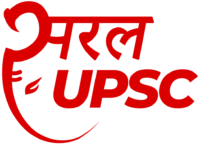Which of the following statements is/are correct?
1. Land reforms post-independence were a huge success across the country.
2. Vinoba Bhava had launched the Bhoodan Movement to facilitate voluntary land transfer.
3. The Digital India Land Records Modernization Programme (DILRMP) was launched in 2018 to establish conclusive land titles.
Select the correct answer using the code given below:
Which of the following statements is/are correct?
1. Land reforms post-independence were a huge success across the country.
2. Vinoba Bhava had launched the Bhoodan Movement to facilitate voluntary land transfer.
3. The Digital India Land Records Modernization Programme (DILRMP) was launched in 2018 to establish conclusive land titles.
Select the correct answer using the code given below:
Options
Similar Questions
“Rule of Law Index” is released by which of the following ?
The term ‘West Texas Intermediate’, sometimes found in news, refers to a grade of
Consider the following statements: 1. At the outset, the Samkhya School of Philosophy was spiritualistic,…
Consider the following pairs: Natural fibres used for crafts State 1. Kauna Manipur 2. Korai…
The strategic debate of 1934-37 was regarding as to how to continue with mass movement…
